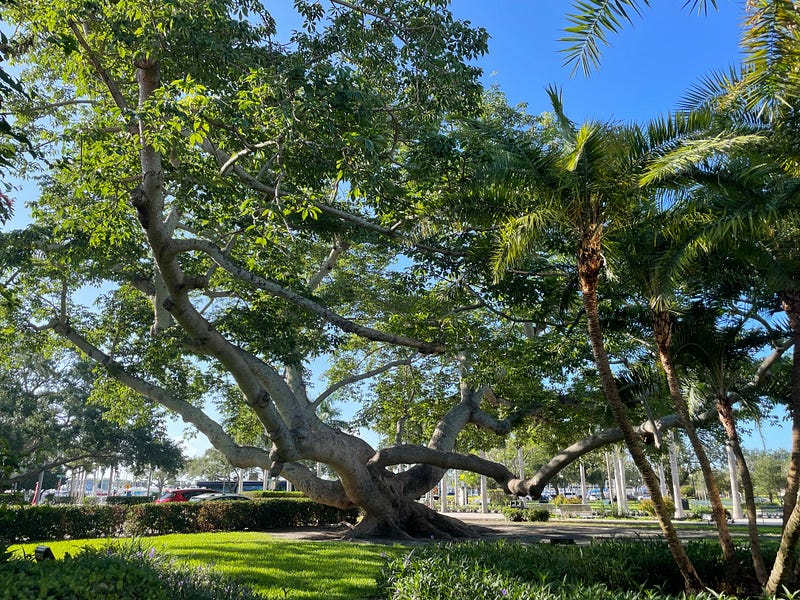Exploring the Wonders of Kapok Trees in Florida's Neighborhoods
Written on
Chapter 1: The Kapok Tree Encounter
During a mid-May stroll through new neighborhoods in St. Petersburg, Florida, I noticed a fluffy, white substance covering the ground beneath a tree. My curiosity was piqued—could it be snow? Of course not, as it was springtime in central Florida. What, then, was creating this cotton-like layer on the ground?
Upon closer examination, I found seed pods brimming with soft, cottony seeds, scattered across the earth. My initial thought was that I had come across a kapok tree. But could there really be a kapok tree in Florida?
I had never encountered a kapok tree before, though I was familiar with them from my time in Indonesia. There, I learned that the cotton-like fibers derived from the kapok tree were commonly used for stuffing mattresses, pillows, and toys, and they also had commercial applications in life jackets.
After snapping a few photos, I turned to Google for confirmation. It identified the tree as Ceiba pentandra, a member of the Malvaceae family. Remarkably, this tree is native to both the Americas and tropical West Africa. How could it be indigenous to both regions when they are separated by such a vast ocean? My association with Indonesia lingered in my mind.
Further research revealed that Ceiba pentandra originated in the Americas and later spread to Africa, possibly floating across the ocean in its buoyant seed pods. The term "kapok" comes from Malay, and the tree is extensively cultivated in Indonesia and Thailand, where it is often referred to as the Java-cotton tree. In the tropics of America and Africa, these trees can reach towering heights of up to 200 feet with a trunk diameter of 10 feet. The varieties cultivated in Southeast Asia for their fibers are generally smaller.
The flowers of Ceiba pentandra emit a strong odor that attracts bats, which play a vital role in pollination. Additionally, the lightweight, porous wood of the tree has historically been used to craft canoes, while certain parts of the tree have medicinal uses.
My exploration of kapok trees continued as I discovered that a large specimen stood next to the Fine Arts Museum in St. Petersburg. Having passed it numerous times without recognizing it, I finally made the effort to view this tree. Unfortunately, I had never witnessed it in bloom or seen its seed pods, which hindered my identification.

Chapter 2: A Closer Look at Bombax ceiba
When I finally saw the tree, I realized it was not the same species I had encountered in the neighborhood. The bark and leaves differed significantly, yet it too belonged to the kapok family. This common name appears to refer to various trees that produce valuable cotton-like fibers.
The tree beside the Fine Arts Museum, Bombax ceiba, was planted in 1965 when it stood a mere three feet tall. Its striking red flowers draw visitors during the spring bloom. Originating from Asia, Bombax ceiba is often planted along roadsides and in parks in India due to its beautiful blossoms. The fibers are utilized in Nepal and India for pillow stuffing, while the dry flower buds find their way into noodle soups in Thailand. Additionally, the dried petals serve as a spice and have medicinal uses in southern India.
What a wealth of knowledge I gained from a simple walk in a new area!
Have you ever spotted a kapok tree? What variety was it, and where did you see it? How is it utilized?
Resources:
- Bombax ceiba on Wikipedia
- Ceiba pentandra on Wikipedia
- Museum of Fine Arts St. Petersburg
- Kapok Tree on Rainforest Alliance
Discover the fascinating relationship between the Kapok tree and its environment in this insightful video titled "Fill It Up With Your White Substance | Kapok Tree."
Join Dewey in "In the Garden with Dewey: The Kapok Tree (Ceiba pentandra)" to learn more about the unique characteristics and importance of this tree.